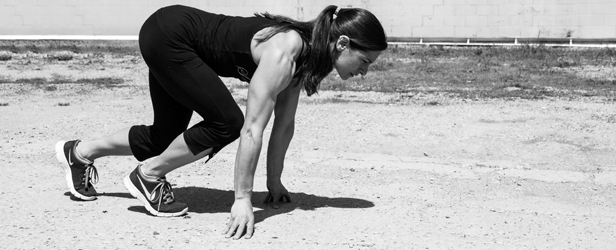
National high school signing day was February 4, 2009. After listening to all the “gurus” discuss recruiting, one thing stood out—speed. Every high school coach in America is looking for the edge in developing speed this off-season, and I hate to say it, but most are missing the boat. A lot of money is being spent on stupid gadgets that won’t do anything more than exacerbate an already existing problem.
In part one of this article series, I’ll address two of the four fundamental qualities—relative body strength, hip stability (pelvic girdle), elasticity/reactivity, and rate of force development—that need to be improved in order to maximize the development of your high school athlete.
Relative body strength
Everything—and I mean everything—is dependent on maximum force development. However, your maximum must be in excess of your current body weight. If you can’t develop enough force to rapidly overcome your body weight, you’re in serious trouble. You will never be able to express speed-strength to your maximum capability without a higher degree of relative body strength. In addition, it’s impossible to quickly achieve hip hyperextension without appropriate force production.
The following are relative strength norms for the squat exercise. Note that these numbers are position specific:
· Lineman—2 X body weight
· Mid skill (linebackers, tight ends, fullbacks)—2–2.25 X body weight
· Skill (wide receivers, defensive backs, running backs, quarterbacks)—2.25 X body weight
Because force is applied one limb at a time during most movements, it’s absolutely vital to train unilaterally. Closed-chain activities such as step-ups and reverse lunges are great for developing strength that improves acceleration mechanics. However, I believe that Prowler pushes are even more effective at developing unilateral strength.
The following pictures demonstrate a type of Prowler push that I use when working on acceleration mechanics. The key is to hyperextend the hip before allowing the next foot to contact the ground. This is also a great exercise for developing hip stability.
Hip stability
Hip stability determines how you control your center of gravity. Run in a straight line for 40 yards. Videotape yourself from the front and from the back. You’ll be shocked at how much time you lose due to excessive rotation in the hips. Not only are your hips rotating in the transverse plane, but they are also rotating in the sagittal plane.
Picture a plate that is rotating on a table on its bottom edges right before it stabilizes. These rotary actions are constantly destabilizing your center of gravity and preventing you from maximizing force application. As a result, you aren’t moving in a straight line. Instead, you’re deviating from side to side or up and down instead of moving in a straight line.
What we commonly refer to as the “hips” is really the articulation between the spine, pelvis, and hips. During the support phase of linear movement, the hips allow for medial rotation, extension, and abduction of the stance leg. During the swing phase, the hips allow for lateral rotation, flexion, and adduction of the swing leg.
Movements of the hips are translated into movements of the pelvis:
forward tilt à flexion of the thigh and backward tilt à backward flexion of the thigh
The pelvis articulates with the spine at the sacroiliac joint. The spine acts as a lever with long lever arms. Even small degrees of movement can have large effects on the total locomotor system. In addition, it is the meeting point of various trajectory forces (Running: Biomechanics and Exercise Physiology Applied in Practice by Frans Bosch and Ronald Klom).
As you can see, this is a complex system wherein control is key. I highly recommend the book, Running: Biomechanics and Exercise Physiology Applied in Practice by Frans Bosch and Ronald Klomp.
Isometrics and what I call dynamic isometrics is the key to developing hip stability. Start by holding an isometric lunge position for an extended period of time. Once you can hold an isometric lunge for over a minute, it’s time to progress to a dynamic isometric. A dynamic isometric lunge is performed by either dropping into the lunge or jumping into the lunge and holding the position. In addition, you can perform dynamic upper body movements while maintaining an isometric position with the hips (great tip I picked up from Jeff Howser).
By developing hip stability, you’ll be able to apply maximum force application into the ground without losing force production due to excessive rotation. In addition, you will have much greater control of your center of gravity when moving in multiple planes.
In my next article, I’ll go into greater detail on how to develop strength/power through hip hyperextension. Until then, read as much as you can, apply as much as you can, and dare to be creative!








